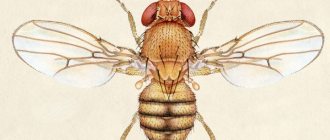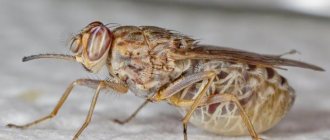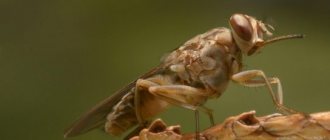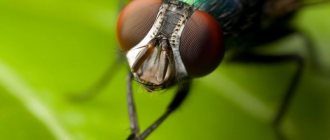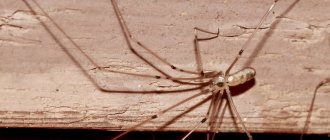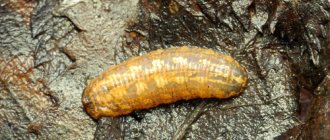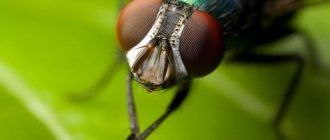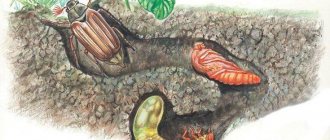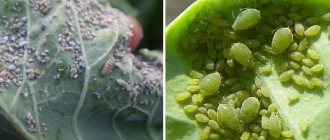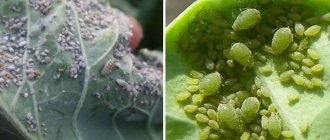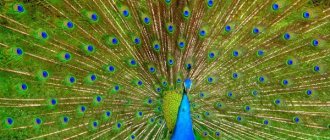- Wild animals
- >>
- Insects
There are a huge number of different insects in the world. One of the most famous and widespread is the Drosophila fly . These tiny flies are familiar to absolutely everyone. You don’t have to wait long for their appearance if there is a bitten or slightly rotten fruit in the house. Even a few days are enough for a whole swarm of fruit flies to appear over a half-eaten peach or apple.
Origin of the species and description
Photo: Drosophila fly
The Drosophila fly can appear in any home, and in vegetable or fruit warehouses and stores it is a permanent resident. This animal is familiar to any gardener and gardener. This fly is quite annoying and extremely difficult to get rid of. Despite this, fruit flies are highly valued by scientists. They are unique scientific material. Today various experiments and scientific experiments are carried out on this animal.
Video: Drosophila fly
The Drosophila fly is called differently: Drosophila minor, fruit fly, fruit midge, Drosophila vulgaris. In Latin the name sounds like Drosophila melanogaster. This is an insect with two wings, a type of midge belonging to the genus Drosophila. Drosophila belongs to a large family of fruit flies.
Interesting fact: Drosophila has many different names and nicknames. People call these insects wine or vinegar flies. This is due to the fact that they very quickly detect the source of the sour fruity smell. Therefore, there are many such animals in various factories and plants for the production of juices and wine.
Today there are quite a few varieties of fruit flies. Scientists count more than a thousand species. Most species live in subtropical and tropical climates. In particular, more than three hundred species of such insects live on the Hawaiian Islands alone. On the territory of the Russian Federation, the most common type of fly is the flightless Drosophila.
The Drosophila fly is characterized by the following features:
- a diet consisting of fermented products;
- high sensitivity to sour aromas;
- fertility - one female is capable of laying several hundred eggs throughout her life;
- the presence of obvious visual differences between females and males.
Vinegar
Unfiltered apple cider vinegar is considered the best weapon in the fight against fruit flies. You can buy it at an organic grocery store or make it yourself.
Pour a small amount of liquid into a glass, cover it with a layer of cling film and secure it with a rubber band. Using a sharp pencil, make several holes in the “lid”.
The sweet smell of apple cider vinegar will definitely attract insects. Once they get inside the glass through the tiny holes, they will not be able to get back out.
Note: Add a small amount of dishwashing liquid to the vinegar. It will give it viscosity - stuck flies will definitely not be able to get out of the trap and will soon die.
Appearance and features
Photo: What a Drosophila fly looks like
The Drosophila fly is called a fruit fly because of its special relationship with vegetable and fruit waste. It is quite easy to recognize this insect.
It has certain characteristic external features:
- small sizes. This is a tiny midge. The average length of an insect is about two millimeters. In this case, the wings are always longer than the body. Female representatives are slightly larger. Their average length is two and a half millimeters;
- bright and prominent eyes. Drosophila has bulging, red eyes. They consist of a large number of segments. Of course, it is problematic for a person to see them with the naked eye. This feature of this tiny insect can only be seen if it is greatly enlarged;
- brown-yellow body color. The color of different species may vary slightly - be lighter or darker;
- bristles with pointed ends. This feature is characteristic of male flies;
- round or cylindrical abdomen. A cylindrical abdomen is characteristic of males, and a more rounded abdomen is characteristic of females;
- eight well-developed tergites in females. Males have only six of them, because two tergites are fused together;
- the presence of durable chitinous plates. Despite their small size, these insects have a durable chitinous coating in the form of plates. Females have a larger number of such plates, while in male Drosophila the four platinas are not developed.
The appearance of fruit flies depends not only on nature. It may vary depending on the climate, environmental characteristics and nutrition of the animal. It is also worth remembering that these insects are great travelers. They very often travel from one country to another on fruits and vegetables. In this case, the midges may slightly change their color and habits.
How to prevent fruit flies from appearing in your home?
Protecting your home from the appearance, and most importantly, the spread of fruit flies is not so difficult.
Washing berries
It is enough to follow some rules:
- how to wash fruits, berries, and vegetables collected in the garden or purchased;
- store fruits and berries in the refrigerator, sort through them regularly, throwing away those that begin to spoil;
- do not leave dirty dishes in the sink;
- immediately after eating or preparing food, clear the table, throw away trimmings and cleaning;
- take out the trash every day;
- keep the kitchen clean;
- observe moderation in watering indoor plants;
- close bottles of alcohol;
- Wash pets' bowls regularly.
Regular ventilation will also help prevent insects from appearing.
Where does the Drosophila fly live?
Photo: Drosophila fly in Russia
The Drosophila fly requires certain conditions to exist and reproduce. This insect needs a warm climate. It does not live in countries with very cold winters and cool summers. Such midges need warmth, so they feel ideal in the tropics and subtropics. Drosophila flies are widespread in areas where the air temperature does not drop below ten degrees Celsius every day.
To live outdoors, the Drosophila fly requires an air temperature of plus sixteen degrees. At a temperature of eighteen degrees, this insect can live for about a month. If the temperature is much higher (above 25 degrees), then life expectancy is reduced. However, in this climate, fruit flies multiply quickly. Also, the number of such animals increases sharply at high humidity. For this reason, tropical islands where it rains frequently have the highest populations of fruit flies.
Fun fact: Drosophila flies are tiny, but very hardy. They can exist in difficult environmental conditions. For this reason, they have always been and are now valuable objects of biological research. These animals have even been on space stations and ships.
This type of fruit fly is widespread throughout the world. The Drosophila fly is found everywhere where vegetables and fruits grow, and it gets into other regions along with imported products. It lives in large numbers in the south of Russia. More than three hundred species of such flies live in the Hawaiian Islands. Only northern countries, where abnormally low temperatures persist throughout the year, can be excluded from their natural habitat.
Content
- 1 Etymology
- 2 Morphology
- 3 Evolution
- 4 Life cycle and ecology 4.1 Habitat
- 4.2 Playback
- 4.3 Mating systems 4.3.1 Courtship
- 4.3.2 Polyandry
- 4.3.3 Sperm competition
- 8.1 Low et al 2007
What does the Drosophila fly eat?
Photo: Male Drosophila fly
Fruit flies, as noted earlier, are permanent inhabitants of places where vegetables and fruits are stored. They are present in large quantities in large warehouses, vegetable stores, shops, and markets. And from these places they end up in residential buildings, restaurants and apartments. Drosophila flies find their food in these places.
The vinegar fly, which is no more than three millimeters long, has an excellent appetite. It feeds on plant sap, plant debris, and rotting parts of fruits. During the larval stage, Drosophila also consume various microorganisms. The diet of adult fruit flies includes: onions, potatoes, apples, nuts, cherries, grapes, pumpkins, cereals, jams, preserves, fruit compotes, and much more.
These products serve not only as food, but also as a breeding ground. In the presence of a suitable temperature regime and the appearance of fermentation products, Drosophila flies begin to actively reproduce. It is extremely difficult to combat such insects, especially in large warehouses, where it is difficult to find and eliminate all spoiled fruits and vegetables. It’s easier to get rid of annoying midges at home. It is enough to deprive it of its food supply. You should constantly review vegetables, fruits, and cereals, take out trash in a timely manner, and frequently wash food storage containers.
How to deal with fruit flies?
The fight against fruit flies must begin with eliminating the source that attracts them. Cleaning the kitchen, storing food properly, and taking out the trash are the required first steps. After this, you can start directly exterminating insects. For this purpose:
- traps (store-bought and homemade);
- repellents (the scents of lavender, mint, eucalyptus, and lemongrass are especially effective);
- smoking camphor;
- insecticidal preparations;
- fumigators;
- folk remedies (spices, tomato tops, ammonia, turpentine).
It is best to use several products at once; this will help deal with midges much faster.
Features of character and lifestyle
Photo: Drosophila fly in nature
Fruit flies are annoying, fussy insects. Their life expectancy is short, so these midges are in a hurry to leave behind offspring as soon as possible. Wine midges live wherever there are fruits, vegetables, their remains, wine, jam and other food products. The entire life of these animals takes place in apartments, private houses, wine storages, various warehouses and shops.
The Drosophila fly is highly sensitive to fermented foods. If these appear somewhere, then in the very near future we can expect the formation of a whole swarm of annoying midges. At the same time, flies live and reproduce regardless of the time of year. In addition to vinegar, fruit acids, and rotting products, these insects are attracted to high humidity. They often live in flower pots, outdoor flowers and some ornamental crops. The cause of midges is excessive watering of plants.
Interesting fact: Drosophila bring not only harm, but also great benefit to people. They are often used in various studies. For example, they are used to model some human diseases. During such studies, about 61% of matches were found between diseases and the genetic code of the insect.
The rhythm of activity of Drosophila flies in natural conditions is with a period of about twenty-four hours. However, scientists found midges with an arbitrary rhythm of life - they moved, ate and rested at completely different intervals. Midges do not live very long - no more than twenty days. Their lifespan depends on many factors: ambient temperature, nutrition, type of insect, humidity level.
Lemon
Fruit flies are attracted to sour smells. If you have a lemon on hand, use it to catch insects. Trim the edges of the fruit so that it can be placed horizontally when cut.
Take a plastic or glass container with a lid. Squeeze a little lemon juice into it, and place the citrus itself on top. Make a small hole in the lid of the container - large enough so that the fly can easily crawl through it, but small enough so that it cannot find its way back.
Close the container and place it in a place where there is a high concentration of insects. Once there are enough fruit flies inside the trap, pour water into it (through the hole in the lid) and place it in the microwave for 15-30 seconds.
Social structure and reproduction
Photo: Insect Drosophila fly
The Drosophila fly is an insect with a short lifespan. At sixteen degrees above zero, such animals live only ten days. For this reason, their body develops very rapidly; female fruit flies are able to lay eggs literally immediately after birth - on the second or third day. Female midges are very fertile. They retain their ability to reproduce throughout their lives.
The female lays eggs directly on fruits, vegetables, and their remains. The eggs are very small. Their length is no more than 0.5 millimeters. They have an elongated shape. At one time, a female Drosophila can lay up to eighty eggs. And over the course of a lifetime, the number of eggs laid by one individual can reach several hundred.
Interesting fact: A female fruit fly only needs one mating with a male to lay eggs several times. The fact is that this insect knows how to preserve seminal fluid for later use.
The development process and growth rate of larvae depends on their diet. After birth, the larvae live on the surface of the fruit. They can live in a semi-liquid environment without drowning thanks to special float chambers. The length of one larva is usually three and a half millimeters. Their body color is white. Some time after birth, the larva pupates, and after four days an adult emerges from the pupa.
Laying eggs
Drosophila eggs look like thin cylinders, up to 0.6 mm. They are clearly visible against a dark background. One female is capable of laying more than 1,500 eggs in her life (up to 20 eggs in each clutch). To lay eggs, it selects fruits with a soft consistency. They can also lay their offspring in drains.
The environment in which the larva hatches determines the future of the adult fly. The larva must eat as much as possible during this period, accumulating a lot of nutrients. This will allow her to grow into a larger individual and significantly increase her chances of survival.
After hatching, the larvae crawl along the surface, then gnaw through the medium and remain inside until pupation.
Natural enemies of fruit flies
Photo: What a Drosophila fly looks like
Drosophila flies are very small insects that have very specific habitats. For this reason, they have virtually no natural enemies. In natural habitats, such animals can only be attacked by spiders and some predatory beetles. Other predators, such as birds, can feast on their larvae. However, this happens extremely rarely.
Insectivorous plants can be called the natural enemy of fruit flies. They eat various flies and fruit flies are no exception. At the same time, fruit flies independently expose themselves to danger by flying straight to the enemy. They are attracted by the special aroma that is released by many insectivorous plants. Sometimes such plants are specially planted in the house in order to quickly get rid of annoying midges. Many varieties of such house plants are very beautiful and easy to care for.
Also, the main enemy of fruit flies is people. Midges settle in food, near trash cans, and in flower pots. They are found in huge quantities at vegetable warehouses, warehouses and even in stores. People try different ways to get rid of fruit flies. They use special sprays, carry out general cleaning, and make fly traps according to folk recipes.
Interesting fact: Adult fruit flies do not harm humans. However, these insects are not so harmless. Their larvae, which enter the body with food, can cause intestinal miasms.
Treatment of bites
How to treat a midge bite and whether it is worth doing depends on the degree of symptoms. First aid consists of treating the wound with an alcohol-based solution or disinfectant. Subsequent measures are aimed at eliminating itching, reducing redness, relieving pain, and avoiding infection. How long it takes for bites to heal depends on the characteristics of the body and the measures taken aimed at recovery. In the absence of an allergic reaction, home treatment with traditional medicine is sufficient. Otherwise, you cannot do without consulting a doctor. Self-prescribing treatment with antibiotics and hormonal ointments is contraindicated.
Allergy to midge bites
Treatment of a midge bite is carried out according to different schemes, which depend on the type of skin changes.
| Algorithm of actions | |
| First aid after a midge bite |
|
| Eliminate rashes and relieve swelling |
|
| How to treat itching |
|
| Treatment of infected wounds |
|
| The appearance of black pus in wounds | Seek help from a medical facility |
| First aid for a midge bite in the eye |
|
Red wine
These fruit flies are such gourmets - they love to pamper themselves with fruit, and they will not refuse red wine. If you have some left at the bottom of the bottle, use it to fight off pesky insects. Place the open bottle in the area where the largest number of flies have accumulated and wait a little.
The smell of wine for fruit flies is like an exquisite aroma of perfume. Once they feel it, they will immediately head inside the bottle. And all you have to do is close it in time and throw it in the trash.
Paper funnel
Place a piece of rotten fruit or a banana peel soaked in beer at the bottom of a glass jar (alcohol attracts flies no less than the aroma of fruit). Make a funnel out of carbon paper and place it in the container with the sharp edge facing down.
This is the simplest version of a fruit fly trap. Attracted by the pleasant smell, they will get inside the jar and will not be able to get back out.
Source: goodhouse.ru/home/najdi-vremja-dlja-zhizni/plodovye-mushki-kak-bystro-izbavitsya-ot-nadoedlivyh-nasekomyh/
